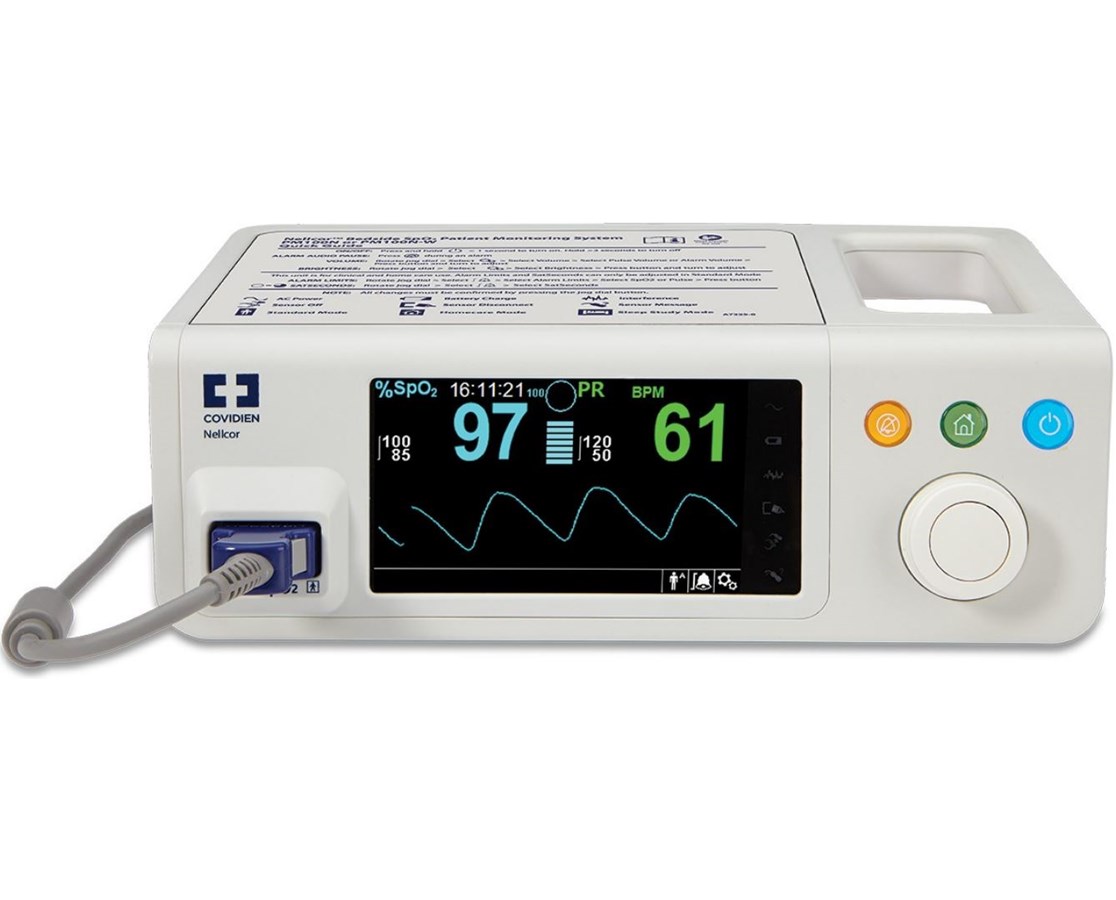


The Nasal Alar SpO 2 Sensor fits comfortably on the nasal ala that is lateral to the nostril (nares) and does not require any adhesive to keep it secure (3). Use and Advantages of the Nasal Alar SpO 2 Sensor This information enables the attending physician or nurse to evaluate the need for supplemental oxygen. The microprocessor calculates these differences and converts the information to a digital readout of the amount of oxygen being carried in the blood. The oxygen-rich haemoglobin absorbs more of the infrared light oxygen-poor hemoglobin absorbs more of the red light. One side of the sensor contains an infrared and a red light source which are transmitted through the tissues to the light detector on the other side. The pulse oximeter consists of a clip-like sensor that houses a light source, a light detector, and a microprocessor. With each heartbeat, there is a small increase in vascular volume, with an associated increase in oxygen-rich haemoglobin.

The technology is based on detection of the light absorptive characteristics of oxygenated haemoglobin and the pulsating properties of the blood flow in the peripheral arteries and arterioles. Pulse oximetry is a non-invasive method used to measure the oxygen level (or oxygen saturation) in the blood of the peripheral tissues, usually using a sensor attached to the finger. It is important to monitor the requirements for and effects of oxygen supplementation as too much oxygen can be as harmful as too little. Pulse Oximetry in the Evaluation of Blood Oxygenation In the treatment of these conditions, oxygen is usually administered through a nasal continuous positive airway pressure (NCPAP) machine, a nasal tube or a ventilator. The chronic conditions requiring oxygen supplementation include chronic obstructive pulmonary disease (COPD), heart failure and sleep apnoea. In premature babies, oxygen supplementation is given for the condition of bronchopulmonary dysplasia (BPD). The acute medical conditions include attacks of asthma, pneumonia or respiratory distress syndrome (RDS). Oxygen Supplementation in Patient TreatmentĪcute and chronic medical conditions can be associated with hypoxia and require supplemental oxygen therapy. Pentland Medical is now marketing this product as the Nasal Alar SpO 2 Sensor (3). The new Xhale Assurance® Nasal AlarSpO 2™ Sensor is compatible with the majority of pulse oximetry monitors used in many different healthcare settings. On the 18th of March 2015, Xhale Assurance, developer of the patented Assurance® Nasal Alar SpO 2™ Sensor, announced its approval by the US Food and Drug Administration (FDA) and the global launch of this second-generation pulse oximetry sensor (1,2). FDA Approval of the Nasal Alar SpO 2 Sensor


 0 kommentar(er)
0 kommentar(er)
